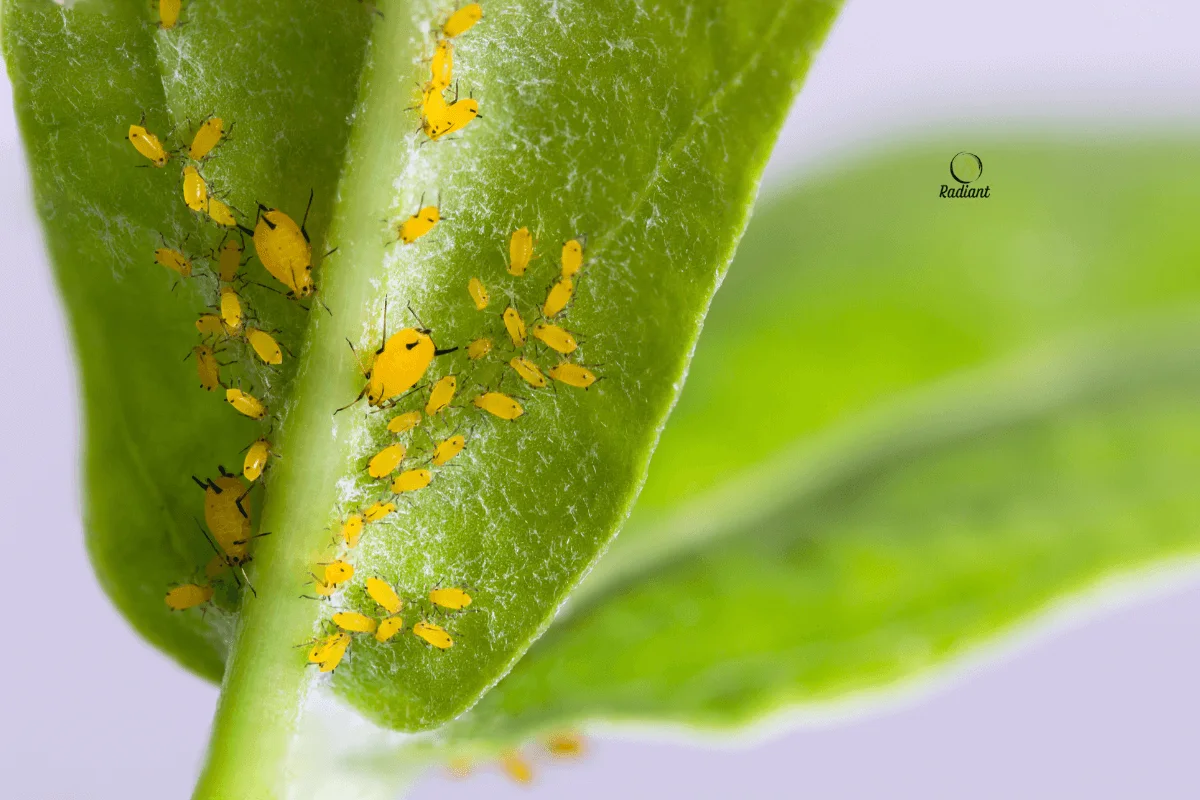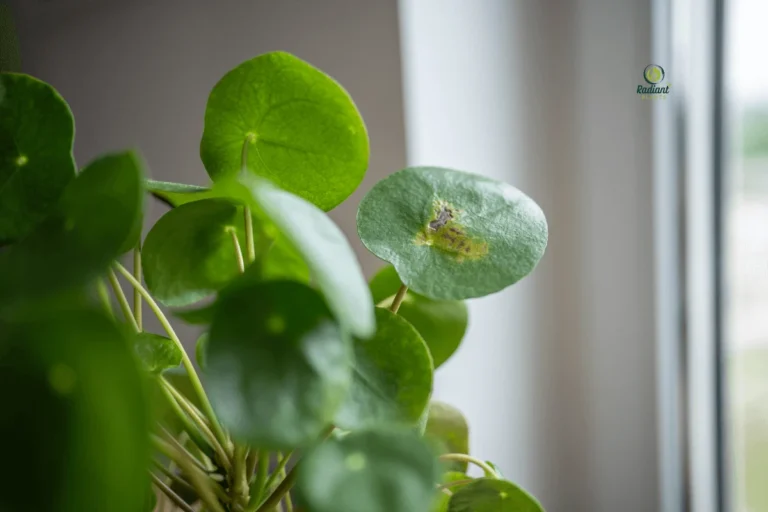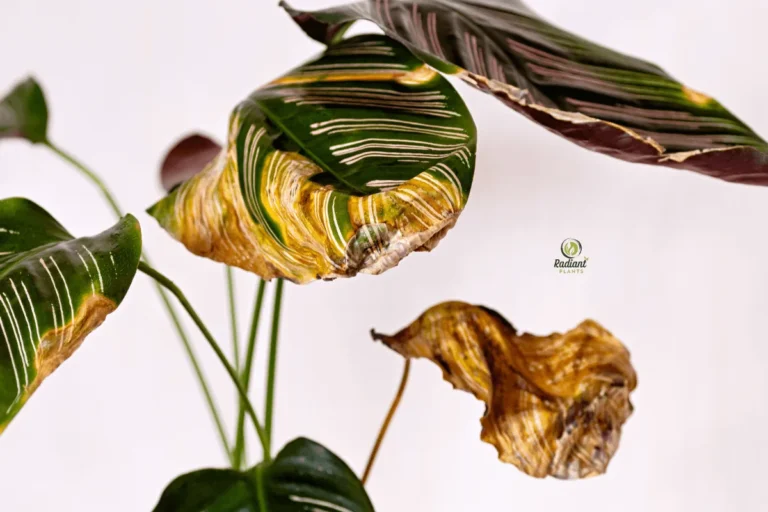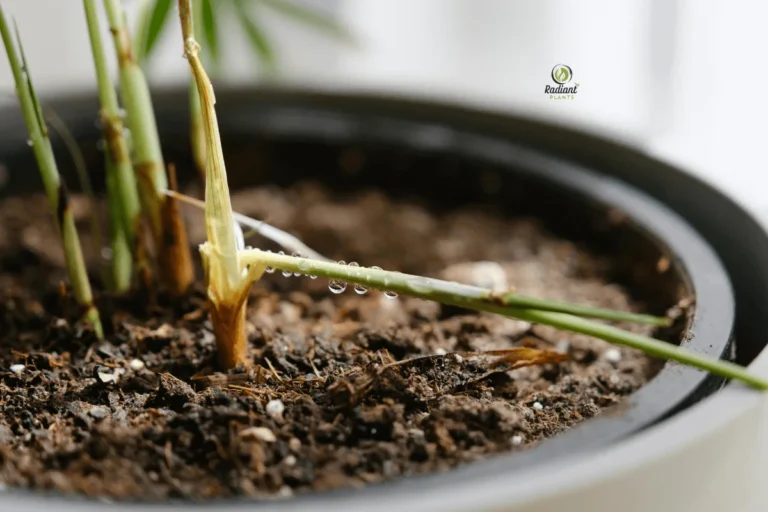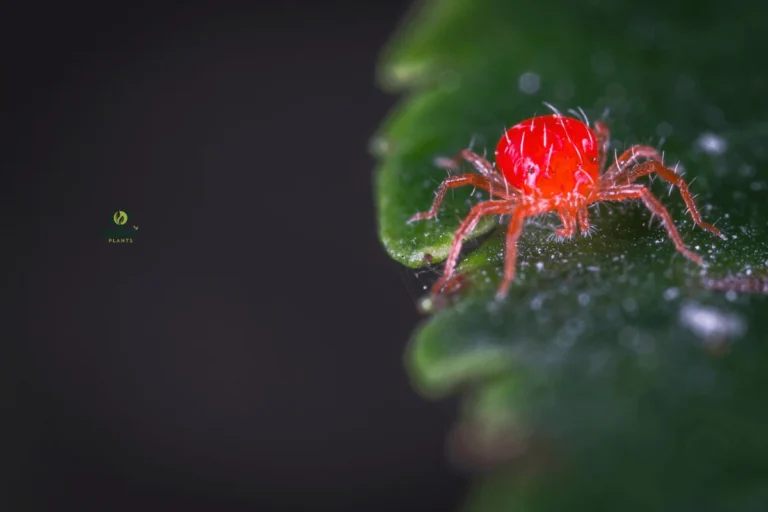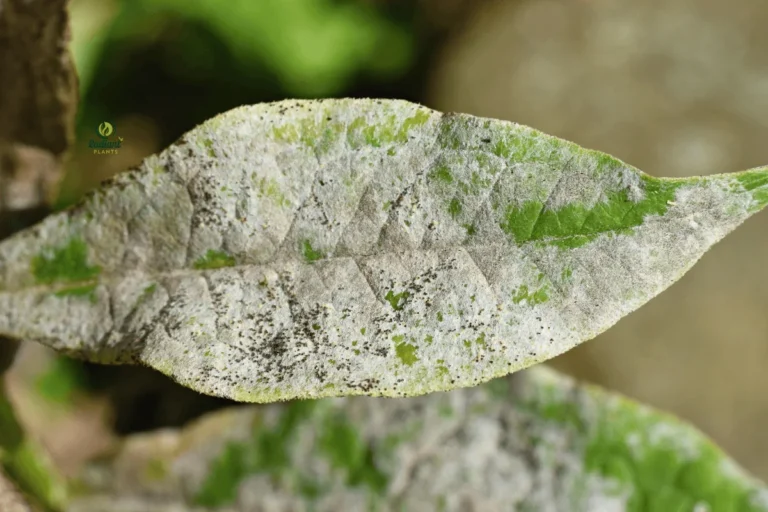Plant Pest Identification: Why 3 Bugs Love Your Plants
Have you ever walked over to water your favorite houseplant, only to discover tiny bugs crawling all over the leaves? That sinking feeling in your stomach is something every plant parent knows too well. You’re not alone in this struggle! Plant pest identification is one of the most important skills every indoor gardener needs to master.
The truth is, certain bugs just can’t resist our beloved houseplants. They seem to appear out of nowhere and multiply faster than we can say “pest control.” But why do some bugs love indoor plants so much more than outdoor ones? And more importantly, how can we spot them before they cause serious damage?
In this guide, we’ll reveal the top 3 bugs that love your houseplants and explain exactly why they find your indoor garden so irresistible. Understanding plant pest identification isn’t just about knowing what’s bugging your plants – it’s about staying one step ahead of these sneaky invaders. By the end of this article, you’ll be able to spot these common pests early and keep your green friends happy and healthy.
Table of Contents
Table of Contents
Why Indoor Plants Attract Bugs More Than Outdoor Plants
Your indoor plants face a unique challenge that outdoor plants don’t have to worry about. Inside your home, bugs find the perfect paradise, and plant pest identification becomes crucial because these conditions make infestations spread faster.
Think about it: your living room maintains a steady temperature year-round, usually between 65-75°F. There’s consistent humidity from your daily activities, like cooking and showering. Most importantly, there are no natural predators like birds, spiders, or beneficial insects to keep pest populations in check. It’s like an all-you-can-eat buffet with no security guards!
Limited air circulation makes things even worse. While outdoor plants enjoy breezes that blow pests away and dry out moisture, indoor plants sit in still air. This creates perfect breeding conditions for many insects. Without proper plant pest identification knowledge, you might not notice problems until they’ve already spread to multiple plants.
Your watering routine also plays a role. When you water outdoor plants, excess moisture evaporates quickly or drains away. But indoor plants often sit in saucers or decorative containers where water can collect. This constant moisture attracts pests and gives them ideal conditions to reproduce.
The controlled environment that makes your plants thrive also makes bugs incredibly happy. Understanding these factors helps explain why plant pest identification is so much more critical for indoor gardeners than outdoor ones.
Bug #1 – Spider Mites: The Invisible Destroyers
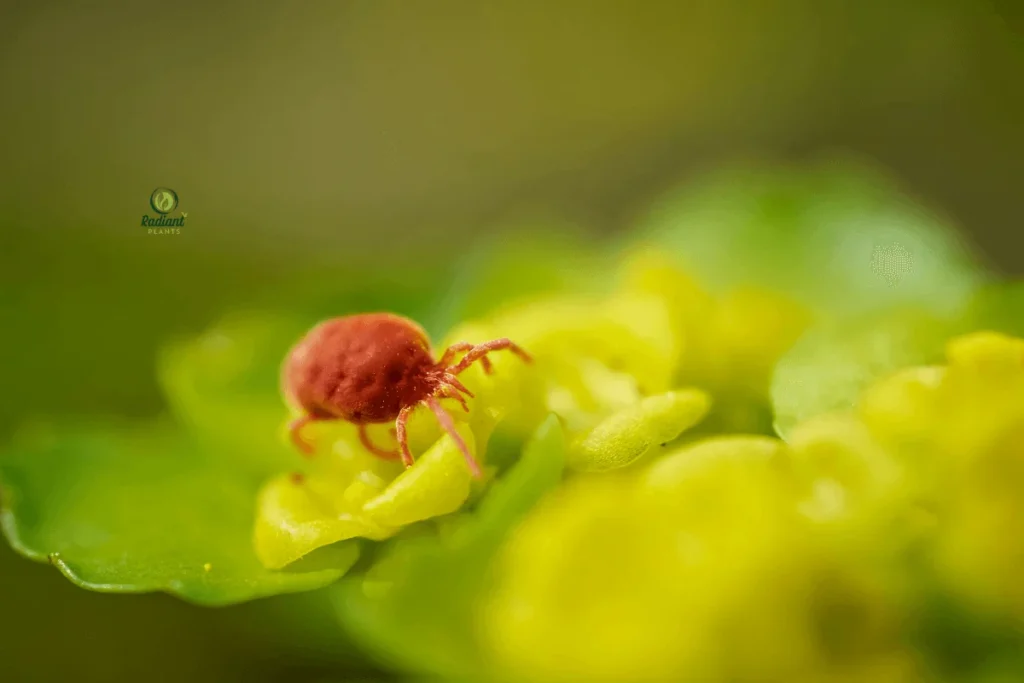
What Makes Spider Mites Love Your Plants
Spider mites are probably the sneakiest pests you’ll encounter, and plant pest identification for these tiny troublemakers requires extra attention. These microscopic pests love the warm, dry conditions found in most homes during winter months when heating systems run constantly.
Here’s what makes your home perfect for spider mites:
- Warm temperatures: They reproduce faster in temperatures between 70-80°F
- Low humidity: Dry indoor air (below 50% humidity) makes them thrive
- Stressed plants: Overwatered, underwatered, or nutrient-poor plants send out chemical signals that attract spider mites
- Protection from predators: No ladybugs or predatory mites to eat them indoors
Spider mites multiply incredibly fast in these conditions. A female can lay up to 100 eggs in just three weeks! Without proper plant pest identification skills, a few mites can become thousands before you notice any damage.
Spider Mite Identification Signs
Learning to spot spider mites early is essential for effective plant pest identification. These pests are so small that you often see their damage before you see them.
| Early Warning Signs | What to Look For |
|---|---|
| Fine webbing | Thin, silky webs on leaf undersides and between stems |
| Yellow stippling | Tiny yellow or white dots are scattered across leaf surfaces |
| Bronze coloring | Leaves turning bronze or copper colored |
| Moving specks | Tiny dots that move when you tap the leaf |
The webbing is usually your first clue. Unlike spider webs, mite webbing looks more like fine dust or cotton candy stretched between leaves. You might need a magnifying glass to see the actual mites – they look like tiny moving pepper specks.
For better identification of plant pests, spider mites, try the white paper test. Hold a piece of white paper under suspected leaves and tap them gently. If tiny moving dots fall onto the paper, you’ve got spider mites.
Why They Choose Certain Plants Over Others
Spider mites aren’t picky eaters, but they have favorites. Understanding their preferences helps with targeted plant pest identification efforts.
Plants spider mites love most:
- Roses and other flowering plants
- Tomatoes and pepper plants grown indoors
- Fiddle leaf figs and rubber plants
- Any plant placed near heating vents
- Plants that are drought-stressed
Environmental triggers that make plants more attractive to spider mites include:
- Dusty leaves – Dust provides hiding spots and food sources
- Poor air circulation – Still air lets mite populations explode
- Inconsistent watering – Stressed plants release attractant chemicals
- Low humidity – Dry conditions weaken plant defenses
Bug #2 – Aphids: The Sap-Sucking Specialists
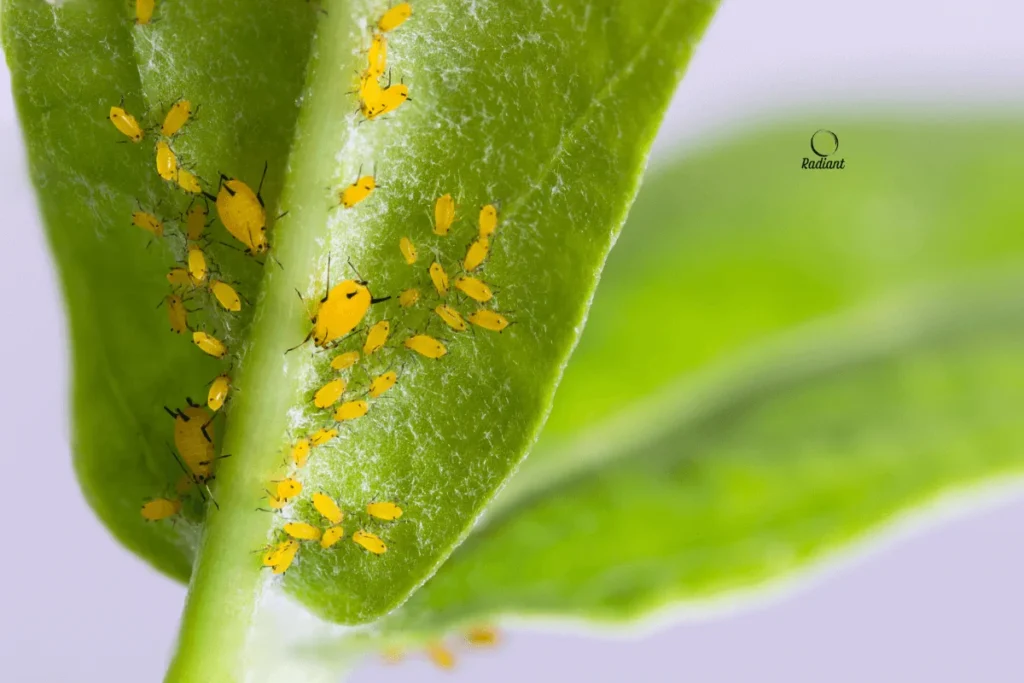
What Draws Aphids to Indoor Plants
Aphids are like tiny green vampires that drain the life out of your plants, making plant pest identification crucial for early intervention. These soft-bodied insects are attracted to indoor plants for several specific reasons that make your home their ideal hunting ground.
Indoor plants offer aphids exactly what they’re looking for: tender new growth packed with nutrients. When you fertilize your houseplants, you’re making them more attractive to aphids. The nitrogen in plant food creates lush, soft growth that’s easy for aphids to pierce with their needle-like mouthparts.
The protection factor can’t be ignored either. Outdoors, aphids face constant threats from ladybugs, lacewings, and birds. Inside your home, they can feed and reproduce without worrying about natural predators. This safety allows their populations to explode in just a few weeks.
Aphids also love the consistent conditions indoors. They don’t have to deal with rain washing them off leaves or strong winds blowing them away. Your comfortable living space becomes their permanent five-star resort, which is why plant pest identification for aphids needs to be part of your regular plant care routine.
Aphid Identification Methods
Spotting aphids requires good plant pest identification skills, but they’re easier to see than spider mites. These pests cluster together in groups, making them more obvious once you know what to look for.
Visual identification checklist:
- Size: 1/8 inch long, about the size of a pinhead
- Color: Usually green, but can be black, red, or white
- Location: Cluster on new growth, flower buds, and leaf undersides
- Movement: Slow-moving or stationary when feeding
| Damage Signs | What You’ll Notice |
|---|---|
| Sticky honeydew | Clear, sticky substance on leaves and nearby surfaces |
| Curled leaves | New leaves curl inward or become distorted |
| Yellowing | Older leaves turn yellow and may drop off |
| Stunted growth | New growth appears smaller or stops completely |
| Sooty mold | Black, powdery coating on honeydew residue |
The honeydew (aphid waste) is often your first clue. This sticky substance feels tacky to the touch and can make leaves shine unnaturally. If you notice ants marching toward your plants, they might be farming aphids for this sweet honeydew – a sure sign you need immediate plant pest identification and treatment.
Their Favorite Plant Targets
Aphids have definite preferences when it comes to plant selection, and knowing these helps focus your plant pest identification efforts on the most vulnerable plants.
Top aphid targets include:
Herbs and vegetables:
- Basil and mint plants
- Tomato and pepper seedlings
- Lettuce and spinach grown indoors
- Any plant with soft, succulent stems
Flowering houseplants:
- Hibiscus and geraniums
- Begonias and impatiens
- Any plant producing flower buds
Popular houseplants:
- Pothos with new growth
- Peace lilies during the growing season
- Any recently fertilized plant
Aphids are particularly drawn to plants that are either very healthy (lots of nutrients) or stressed (weakened defenses). This makes plant pest identification tricky because both thriving and struggling plants can become targets.
Bug #3 – Fungus Gnats: The Soil Dwellers
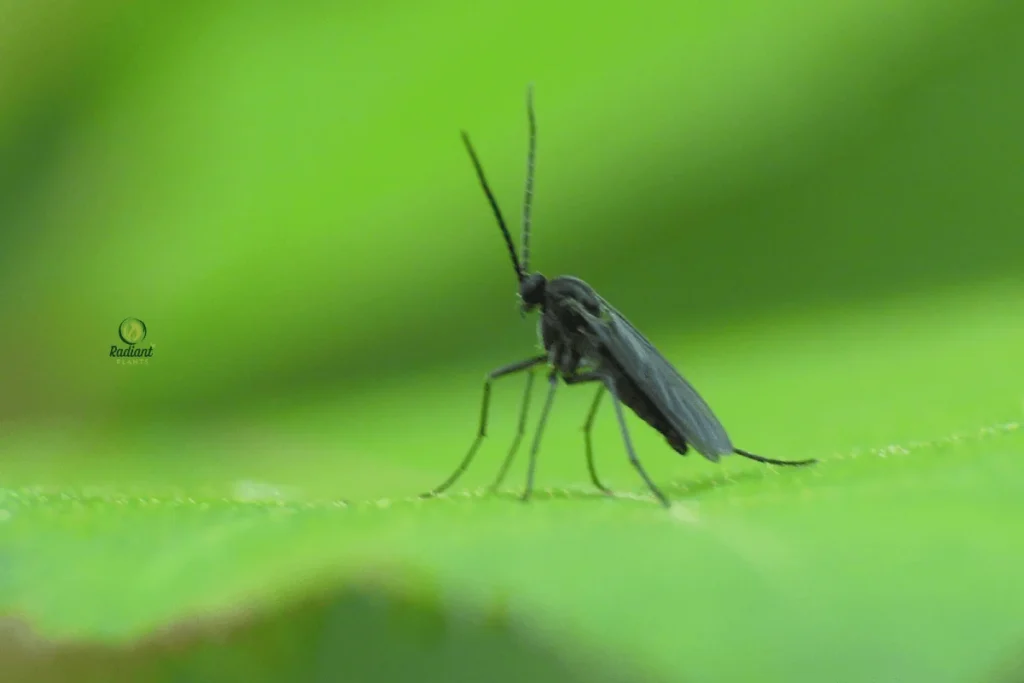
Why Fungus Gnats Thrive in Indoor Gardens
Fungus gnats are perhaps the most frustrating pests for indoor gardeners, and plant pest identification for these flying nuisances focuses mainly on the soil rather than the plants themselves. These tiny flies don’t actually damage your plants directly, but their presence indicates problems with your watering habits.
The lifecycle of fungus gnats revolves around moist soil conditions. Adult females lay their eggs in the top inch of potting soil, especially where organic matter is decomposing. The larvae that hatch feed on organic material, fungi, and sometimes plant roots if the infestation is severe.
Your indoor environment provides everything fungus gnats need to thrive:
- Consistent moisture: Regular watering keeps the soil damp longer than outdoor conditions
- Organic matter: Potting mixes contain bark, peat, and other organic materials that larvae eat
- Stable temperatures: Room temperature speeds up their lifecycle
- No natural predators: No soil-dwelling beneficial insects to control populations
Understanding these conditions is key to effective plant pest identification for fungus gnats. If you see these flies, your soil is staying too wet for too long.
Fungus Gnat Identification Guide
Recognizing fungus gnats requires different plant pest identification techniques since you’re dealing with both flying adults and soil-dwelling larvae.
| Life Stage | Identification Features | Where to Look |
|---|---|---|
| Adult flies | 1/8 inch long, dark gray/black, weak fliers | Flying around plants, attracted to lights |
| Larvae | 1/4 inch long, clear/white with black heads | Top 2 inches of soil |
| Eggs | Tiny, white, barely visible | Soil surface and just below |
Adult fungus gnat behavior:
- Fly in a zigzag pattern when disturbed
- Attracted to bright lights and windows
- Often found resting on the soil surface
- Most active when you water plants
Larvae identification in soil:
- Use a flashlight to examine the soil surface
- Look for tiny white worms with dark heads
- Most numerous in constantly moist areas
- It may be visible when you repot plants
For accurate plant pest identification of fungus gnats, try the potato test. Place a slice of raw potato on your soil surface. Check it after 2-3 days – if it’s covered with tiny white larvae, you’ve confirmed fungus gnats.
Plants Most Susceptible to Fungus Gnats
Not all plants attract fungus gnats equally, and focusing your plant pest identification efforts on high-risk plants can help prevent major infestations.
High-risk plants include:
Moisture-loving plants:
- Ferns and Boston ivy
- African violets
- Peace lilies and prayer plants
- Any plant requiring constant soil moisture
Recently repotted plants:
- Fresh potting mix contains organic matter that attracts gnats
- Disturbed soil provides easy egg-laying sites
- New soil often holds more moisture than established plantings
Plants in poorly draining containers:
- Pots without drainage holes
- Decorative containers that hold excess water
- Plants sitting in water-filled saucers
The key factor isn’t the plant species itself, but the soil conditions around these plants. Effective plant pest identification for fungus gnats means monitoring soil moisture levels and drainage rather than just looking at the plants.
The Science Behind Bug Attraction to Plants
Understanding why bugs are drawn to certain plants helps improve your plant pest identification skills and prevention strategies. Plants communicate through chemical signals, and stressed or damaged plants send out “help me” messages that bugs can detect.
When plants face stress from overwatering, underwatering, poor nutrition, or environmental changes, they release specific volatile compounds. These chemicals are like dinner bells for many pests. Healthy plants also release chemicals, but they’re usually defensive compounds that repel insects rather than attract them.
Indoor conditions can amplify these chemical signals because there’s less air circulation to disperse them. This concentrated chemical communication makes your houseplants more visible to pests, which is why plant pest identification becomes so important for indoor gardeners.
Research shows that certain wavelengths of light reflected by stressed plants also attract insects. Yellowing leaves, for example, reflect light differently than healthy green leaves. Many pests use these visual cues along with chemical signals to locate their preferred host plants.
Temperature and humidity also affect how these chemical signals spread through your home. Warm, humid conditions help chemical attractants travel further, while dry conditions might concentrate them around the source plant. Understanding these factors helps explain why plant pest identification timing often coincides with seasonal changes in your home environment.
Prevention Strategies Based on Bug Behavior
Knowing how these three pests behave allows you to create prevention strategies that work with your plant pest identification knowledge. Instead of just reacting to infestations, you can make your indoor garden less attractive to bugs in the first place.
Environmental modifications for spider mite prevention:
- Increase humidity around plants using pebble trays or humidifiers
- Improve air circulation with fans (keep air moving but avoid direct drafts)
- Keep plants away from heating vents and radiators
- Maintain humidity levels above 50% during winter months
Aphid prevention strategies:
- Avoid over-fertilizing plants (reduces attractant chemicals)
- Quarantine new plants for 2-3 weeks before introducing them to your collection
- Regularly clean plant leaves to remove dust and potential pest eggs
- Monitor plants closely after fertilizing or repotting
Fungus gnat prevention methods:
- Allow the soil to dry slightly between waterings
- Remove excess water from saucers within 30 minutes of watering
- Use well-draining potting mixes with perlite or coarse sand
- Cover the soil surface with decorative gravel to prevent egg-laying
Universal prevention tips for better plant pest identification:
- Inspect plants weekly during regular care routines
- Keep a plant journal to track watering, fertilizing, and any pest issues
- Maintain consistent environmental conditions (avoid dramatic temperature or humidity changes)
- Clean gardening tools between plants to prevent spreading pests
Early Detection: Your First Line of Defense
The best plant pest identification strategy is catching problems before they become infestations. Early detection requires developing good observation habits and knowing exactly what to look for during your regular plant care routine.
Weekly inspection checklist:
- Check leaf undersides – Most pests prefer the protected undersides of leaves
- Examine new growth – Tender shoots and buds attract many insects
- Look at the soil surface – Check for flying gnats or unusual moisture patterns
- Inspect stems and joints – Aphids often cluster where leaves meet stems
- Feel for stickiness – Honeydew indicates sap-sucking insects
Essential tools for plant pest identification:
- Magnifying glass (10x magnification works well)
- Small flashlight for examining dark areas
- White paper for spider mite testing
- Smartphone camera with a macro lens for documenting findings
- Small notebook for tracking observations
Recording and tracking pest patterns:
Keep simple records of your plant pest identification efforts. Note:
- Date of inspection
- Plants checked
- Any suspicious signs observed
- Environmental conditions (recent watering, fertilizing, temperature changes)
- Actions taken
This information helps you identify patterns. You might notice that certain plants always develop problems after fertilizing, or that pest issues increase during specific seasons.
When to take immediate action:
Don’t wait if you notice:
- Any webbing on plants (spider mites spread rapidly)
- Clusters of small insects on new growth (aphids reproduce quickly)
- Multiple flying gnats around plants (indicates established soil infestation)
- Sticky honeydew on leaves (sap-sucking insects are actively feeding)
- Sudden changes in plant appearance (yellowing, curling, or dropping leaves)
Early intervention is always easier and more effective than treating established infestations. Trust your plant pest identification skills and act quickly when you spot warning signs.
Conclusion
Understanding these three common indoor plant pests – spider mites, aphids, and fungus gnats – gives you the foundation for successful plant pest identification in your home garden. Each pest has distinct preferences, behaviors, and warning signs that help you catch problems early.
Remember that spider mites love warm, dry conditions and leave telltale webbing and stippling damage. Aphids cluster on new growth and leave sticky honeydew residue. Fungus gnats indicate overwatering problems and are most visible as flying adults around your plants.
The key to successful plant pest identification isn’t just knowing what these bugs look like – it’s understanding why they’re attracted to your plants in the first place. By managing environmental conditions, maintaining proper watering practices, and conducting regular inspections, you can keep your indoor garden healthy and pest-free.
Your plants depend on you to be their protector against these invisible invaders. With good plant pest identification skills and consistent monitoring, you can catch problems before they become disasters. Start implementing these strategies today, and your green friends will thank you with healthy, vigorous growth.
Take action now: Schedule your first weekly plant inspection for this weekend. Grab a magnifying glass, check each plant systematically, and start your plant pest identification journal. The small effort you invest in prevention will save you hours of treatment time and keep your plants happy for years to come.
How to identify pests on plants 🌿🍓🪲
Frequently Asked Questions
How often should I perform plant pest identification checks on my houseplants?
Check your plants weekly during regular watering. This consistent plant pest identification routine helps catch problems early when they’re easier to treat.
Can I use the same plant pest identification methods for all types of houseplants?
Yes, the basic plant pest identification techniques work for all plants, but pay extra attention to plants that are more susceptible to specific pests based on their care requirements.
What’s the most important tool for effective plant pest identification?
A magnifying glass is essential for plant pest identification, especially for tiny pests like spider mites that are hard to see with the naked eye.
How quickly can these pests spread to other plants?
Very quickly! This is why regular plant pest identification is crucial. Spider mites and aphids can spread to nearby plants within days under ideal conditions.
Should I isolate plants immediately after discovering pests during plant pest identification?
Yes, always isolate affected plants immediately to prevent spread. This is a critical step in any plant pest identification and treatment plan.

